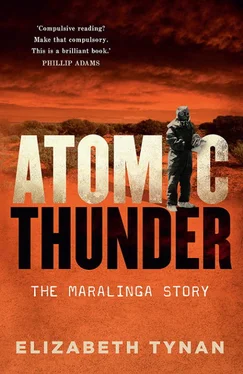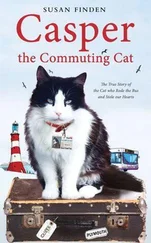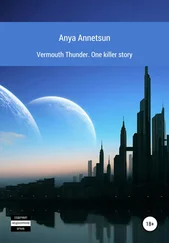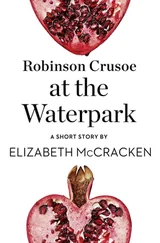12
The remains of Maralinga
The little bridge they crossed on the oleander-lined path leading from the airfield to the terminal was called the Bridge of Sighs. Last rites – a sigh of trepidation by those arriving; a sigh of relief by those departing – were often performed on that spot.
John Keane, ‘Maralinga’s afterlife’, 2003.
The whole story, when one looks at it in detail, is rather sordid and the major villain in that sordid story is without doubt the then Prime Minister in the early 1950s, the lickspittle Empire loyalist who regarded Australia as a colonial vassal of the British crown. I refer of course to Sir Robert Menzies, the twentieth century satrap who invited the British to pollute Australia with nuclear fallout: the pseudo patriot who cravenly surrendered Australian sovereignty to a declining imperial power.
Senator Peter Walsh, minister for Mines and Energy, Australian Senate, 1984.
Thomas Tooke has been with the RAAF since 1943 and has seen service in Korea and Japan. Now he is sent to Maralinga as a despatch corporal, having been kitted out at the Edinburgh RAAF base north of Adelaide with an extra pair of drab pants, a shirt and a pair of boots. He is bemused that when he arrives at Maralinga in 1956 he is issued with an army uniform as well, without explanation. He has a bigger shock when he arrives at Camp 43, not far from the forward area. The bulldust is like nothing he has ever seen. It’s as fine as talcum powder and gets into everything. He and his comrades find that the bulldust conceals a layer of hard limestone when they try to drive tent pegs into the ground. They have to get jackhammers to make holes in the limestone to raise their two-man tents. They get some gravel from the Watson railway siding to try to damp down the swirling, annoying dust.
The men eat in the marquee and the food’s okay. The blowflies, though, are terrible. Unfortunately, they ‘blow’ the food by laying maggots in it, and bad things happen as a result. He and everyone else he knows have bouts of terrible diarrhoea. He drops from 86 kilograms to 70. That is not the only discomfort. Any metal at the camp is so hot that you can’t touch it, as temperatures soar above 38 degrees Celsius. The open showers have a drum holding several gallons of muddy, salty water held aloft by a hook on the side of a tent. If it’s windy when you take a shower, you have to follow the droplets of water around before they are carried away. There is a coconut oil soap called Seagull Soap, which can lather even in the hard water. Every fortnight on pay day the men get one cake of soap and two razor blades. Tooke hears a rumour about an attempted lynching of a civilian, one of the construction crew, caught cheating at cards. A South Australian policeman apparently stepped in and stopped it. The desert conditions make everyone a bit crazy. Lennie Beadell swings by every so often, with his Land Rover packed to the gunwales, on his way to an even more remote location.
After a while, Tooke moves from the tented camp to Maralinga village. It is a bit more luxurious, but the aluminium sheeting on the roof constantly lifts up and flaps around, requiring endless running repairs. Still, most of the cooks in the village are navy men, and the food is excellent. There are movies six times a week, although sometimes the same film is shown two nights in a row. As the day approaches for the first Maralinga atomic test, the village fills up. Boffins from Britain start to arrive, and observers from New Zealand, America, Canada and other places. Even the observers are pressed into service. No man is left idle; they all get to work on myriad construction tasks. Tooke drives his 10-tonne crane to the forward area. He sees a working group and asks if they know where a colleague is. A cultured voice replies, ‘What regiment is he with?’ Tooke drives off laughing.
One Tree at Maralinga, 27 September 1956. Finally the winds have died down and the countdown begins. Tooke is less than a mile away from the forward area when the awe-inspiring explosion takes place, and eight hours later he enters the forward area with his crane. There are people everywhere, carrying out lots of different tasks. Tooke must recover vehicles deliberately placed there. The health physics people have given him bootees to wear, the only items of protective clothing he is ever given. His other garb is his RAAF overalls. He never receives a film badge or dosimeter. Most of the people sent to recover vehicles from the forward area are RAAF personnel. Some of the vehicles have been tipped over onto their sides. There are tanks, Land Rovers, Commer vans, artillery, anti-aircraft guns, Humber Scout cars and even Swift aircraft. After he comes back from work that day, a Geiger counter is run over him and it clicks slowly. The new, expensive, permanent nuclear test site in the South Australian desert is now fully functional. Tooke has a lot of work to do.
The atomic age arrived when the US dropped nuclear bombs on the Japanese cities of Hiroshima and Nagasaki in August 1945, heralding an era that seemed to be even more dangerous than the war just ending. When nuclear scientist spies wreaked havoc on postwar security, the British, sidelined by the Americans, were on their own. They embarked on their pigheaded, quixotic, ill-advised, careless but still rather remarkable quest to match the Americans and the Soviets in the nuclear club. In fact, they were not entirely alone, as they co-opted the Australian Government for the task. At all times, the relationship between the British and the Australians was unequal. The British were the masters, and the Australians were the servants. The Australians obediently provided the site and considerable financial and military resources, as well as staunch political backing. The atomic test authorities made the decisions and relayed them, often with inadequate technical detail, to the Australians. When the tests were over and the British were gone, the picture of what they had left behind was alarmingly incomplete. The Pearce Report was no help. What exactly the tests had wrought remained hidden to successive Australian governments and the Australian people for far too many years.
But, one by one, the jigsaw pieces fell into place and the Maralinga story started to take shape. The British authorities have still not given up all the missing pieces. No-one outside a small circle knows why the UK Ministry of Defence still retains some files relating to Vixen B and other issues (including information recently released by WikiLeaks). Whether those files will ever be released is currently unknown. Given Vixen B’s impact on Australian territory, the ongoing refusal to release all the information that relates to those experiments could reasonably be called outrageous. This saga tells us, though, that the British authorities charged with testing the nuclear deterrent did not factor in Australian feelings. The truth is unpalatable but must be faced: Australia in the 1950s and early 1960s was essentially an atomic banana republic, useful only for its resources, especially uranium and land.
Australia tried without the slightest success to have some status in the arrangements. It was not to be. When the world turned and Australia no longer had anything vital to offer, the British left without properly cleaning up their mess. Tellingly, the legendary official British historian Margaret Gowing rarely mentioned Australia throughout her magisterial accounts of the British nuclear enterprise. Australians were not a partner in any sense of the word, just lackeys and useful idiots for the most part. All the historical circumstances that converged after World War II made this inevitable, and it should not perhaps be surprising that this was the reality.
Читать дальше












